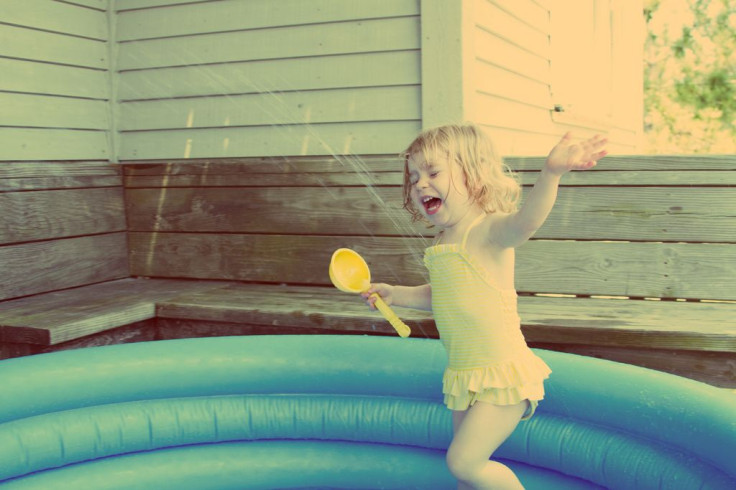Pool Water Contamination Questions Raised Over Personal Care Products, Pharmaceuticals In Urine

It begins with an eerie sense of warmth around your legs. Next is the pang of worry: No, it couldn’t be. But yes, you finally admit to yourself, it is. Someone peed in the pool.
Chances are, as you leap from the now-heavily diluted toilet bowl, you aren’t considering what the health effects would have been if you had stayed in the water, and luckily you don’t have to. Scientists at Purdue University recently investigated the leftover concentrations of personal care products and pharmaceuticals in pool water to learn if the chemicals posed any risks. Unfortunately, they still don’t know what to make of the caffeine- and hormone-laced urine.
“The main issue is that the release of chemicals into a place like a swimming pool is completely uncontrolled and unknown,” said Ernest R. Blatchley III, a professor of civil and ecological engineering at Purdue, in a statement. “I don't want to be an alarmist. We haven't discovered anything that would be cause for alarm right now, but the bottom line is we just don't know.”
The findings might seem anticlimactic, but sometimes science is at its best when it discovers a knowledge gap. Blatchley and his research team relied on a method of analysis previously developed by Ching-Hua Huang, a professor in the School of Civil & Environmental Engineering at the Georgia Institute of Technology. The technique can identify and quantify 32 pharmaceuticals and personal care products in water. Using pools in both Indiana and Georgia, the team found the three chemicals most represented were: DEET (the active ingredient in insect repellants), caffeine, and TCEP, which is a type of flame retardant.
“The other 29 could have been present at concentrations below the detection level,” Blatchley conceded. “And because there are literally thousands of pharmaceuticals, this is just a small subset of compounds that could be present in swimming pools.”
Location is important. As people are apt to contact the compounds through their skin, by inhaling them, or by ingesting them, the water may end up posing more of a threat than other environments. Many of the compounds themselves also contribute to a possible danger. As Blatchley points out, pharmaceuticals like birth control pills are designed to be active in low doses. While this should comfort the user, it probably won’t give the average swimmer much comfort knowing it can spread to the nearby water. (However, it’s unclear who exactly is taking birth control and still peeing in the pool.)
The scarier (though not alarming) consequence, which still remains unknown, is how many of these chemicals interact with chlorine to produce a third, more hazardous byproduct. “We are interested not only in the chemicals that may end up in the swimming pool, but also, once they do end up there, what happens to them?” Blatchley said. “Do they degrade? If so, what do they degrade to? These too are unanswered questions.”
Specifically, the Centers for Disease Control Prevention worry about how these byproducts can cause recreational water illnesses, or RWIs. These include conditions related to skin, ears, eyes, and brain and respiratory function. And urine isn’t the only mode of transmission. Others include sunscreen, insect repellant, makeup, and sweat. Many pharmaceutical products, for instance, will get excreted through the skin as sweat if they aren’t fully metabolized.
To nail down what the risks of certain chemicals and chlorine-associated byproducts might be, the research team has its sights set on statistical data of pharmaceutical sales. Their hope is that by looking at the compounds that get the most consumer attention, they can figure out how they interact in water. They want to reassure people that an unnerving warmth below-depth is just pee and nothing more.
Source: Weng S, Sun P, Ben W, Huang C, Lee L, Blatchley E. The Presence of Pharmaceuticals and Personal Care Products in Swimming Pools. Environmental Science & Technology Letters. 2015.



























